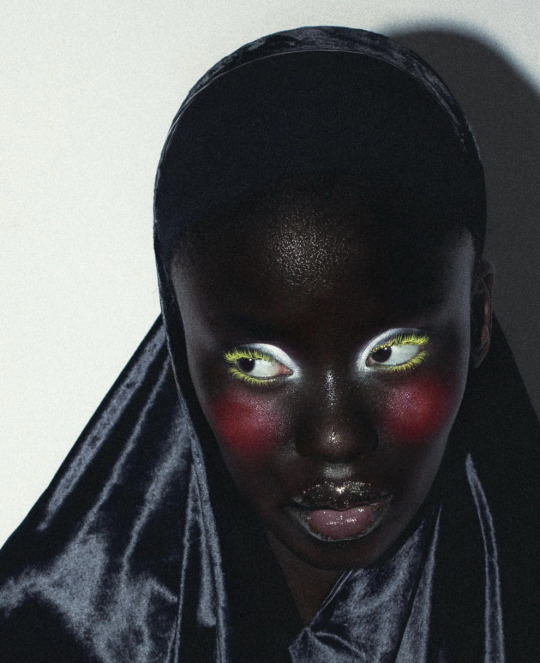#YaBr
Text
Kurahk’s Potential

Kurahk has the capability to be one of the most terrifying Rahkshi if you think about it, even more terrifying than the literal Rahkshi of Fear, Turahk. On the physical level, it could function like Jojo’s Survivor, or the church scene from Kingsman; Reducing everyone in an area into a mindless, raging, all-out brawl where nothing is held back and they senselessly beat each other to death, ignoring any pain and injury and going for even the most horrific blows because all inhibition has been overpowered by a berserk state. Even the closest friends can be found howling curses at each other as they snarl and bite…
And could Kurahk also direct the target of your anger? Suddenly make you feel a lot angrier about a subject, a person, on your mind? Make everyone in a room fixate pure wrath onto one individual there in particular? Would a Stage 6 Kurahk have the power to make someone so deeply enraged towards themselves, they commit self-harm as an outlet?
Not to mention, the emotional scars, since Kurahk IS a creature that targets that area specifically. Not just the trauma of an all-out massacre; The things it can make people say and admit under the influence of Anger. Even when the effect subsides, the memory of what they said lingers, as does the uncertain question; Surely you didn’t mean it, when you said that? And they agree they didn’t! But at the same time… Was that idea always there? And the Kurahk just emboldened them to admit it aloud? Does it create and/or amplify pre-existing feelings?
The conflict could be so much more meaningful and personal than just people calling each other petty insults and corny puns about their elements. Kurahk could make you say things you can NEVER take back, and cause permanent damage in relationships that are strained forever; Make people hit hard and deep in emotional terms. Like…
Can you imagine how unsettling it’d be for Pohatu, the most kind and compassionate Toa, the most cheerful one, to suddenly be reduced to a howling, cursing, frothing rage? Could you imagine Kurahk causing Pohatu to scream at Kopaka that he’s sick of him and his loner attitude actually; Pohatu isn’t going to waste any more of his energy on him, anymore. Kopaka wants to be alone, FINE, have fun being by yourself; Kopaka’s done nothing but push people away and now he’s finally succeeded with the one person who always stuck through!
Even when Kurahk’s effect wears off, and Pohatu promises and swears he didn’t mean it… Well, perhaps the Shadow Toa from 2001 make their return after all. They emerge to the surface after having been absorbed and seemingly suppressed, made at peace with, and now Pohatu DOES struggle with his shadow self this time. Because Shadow Pohatu is literally the darkness inside of him taken form, and now a Kraahkan isn’t needed to make a new body for it, for Pohatu’s issues to manifest.
That stuff could really traumatize the Toa Nuva and their relationships, but them working through that could also cause them to emerge from the gauntlet, even stronger than ever. Because instead of angsting or moping, or letting Kurahk’s rage influence him; Maybe Kopaka DOES admit that yeah, he has an issue with putting up walls! Pushing people away! And he can’t take Pohatu’s patience for granted because it isn’t healthy to expect his friend to always put up with that, endlessly! So regardless of how much Pohatu meant it, it does make Kopaka reflect and admit that he DOES appreciate Pohatu, and actually put in the effort to openly reciprocate.
Tahu apologizes for the stress he puts his teammates through, and confesses his own issues. And so on, and so forth; Because I think there’s a duality to anger, and how it can also be weirdly healing and opening, honest even, under the right circumstances. 99% of the time it just causes needless strife by Kurahk, but for those who really use this as an opportunity to vent and express themselves, it can force people to acknowledge an issue they’ve all been suppressing and ignoring, by bringing it to light. And that can result in an intervention that forces everyone to healthily tackle these root problems, and ultimately emerge even more united for it, rather than the other way around as Makuta intended.
Obviously Bionicle is a kids’ franchise and 2003’s story was dumbed down around the more simplified, streamlined movie Mask of Light. But boy is there a lot of potential to really explore Makuta’s plans to destroy the unity of everyone, Toa and Matoran alike, via the power of Kurahk’s Anger. Something a lot more difficult to overcome than just “Sorry I called you a firespitter.”
And that might bring something uncomfortably familiar to the Turaga, who could see their old conflicts reborn in the Toa Nuva. TL;DR Kurahk forces our protagonists to undergo a therapy arc or die in the process, what is this Silent Hill? It ends with Kurahk karmically suffering the collective, cathartic wrath of the Toa Nuva he’s tormented as they tear him apart or something.
79 notes
·
View notes
Text

Fay Yabre at Act No.1, Spring 2023
1 note
·
View note
Text


Fay Yabre
79 notes
·
View notes
Text


Greyscale shading & lighting study I did based on this reference image!
Ref source: Fay Yabre by Manuel Montanari
30 notes
·
View notes
Text
Interrotta la serie positiva del Messina beffato nel finale dal Giugliano - VIDEO
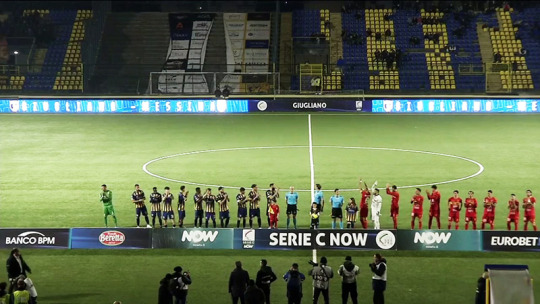
Si interrompe dopo sei partite la serie di risultati utili del Messina. Una sconfitta maturata al 90’ dopo un secondo tempo in cui si è visto un calo fisico vistoso del Messina.
Modica aveva schierato il suo 4-3-2-1 con Fumagalli in porta Scafetta e Ortisi esterni in difesa con manetta e Dumbravanu centrali; centrocampo con Firenze e Franco; Emmausso, Rosafio e Zunno dietro l’unica punta Plescia.
Nel primo tempo il Messina produce il solito gioco, due rigori netti non dati dallo scadente arbitro D’Eusanio. Nel secondo tempo con il calo fisico del Messina il Giugliano cinge d’assedio l’area biancoscudata. Balde, Ciuferri e Romano vanno vicini al vantaggio, ma anche Plescia da lontano tenta di sorprendere il portiere avversario. Nel finale da un calcio d’angolo inesistente nasce l’azione da rete Giugliano, con l’ex Salvemini che segna al 90’.
Occorre voltare pagina e pensare al prossimo match contro il Picerno una delle squadre più forti del campionato.
Tabellino:
Giugliano-Messina 1-0
Giugliano: Russo, Romano, De Rosa (64' Gladestony), Salvemini, Oyewale (75' Yabre), Valdesi (88' Menna), Caldore, Cargnelutti, Ciuferri (75' De Sena), Balde, Maselli (88' Berardocco). A disposizione: Baldi, Rob Coprean, Scognamiglio, Boccia, Oviszach, Di Dio. Allenatore: Bertotto.
Messina: Fumagalli, Dumbravanu, Firenze (70' Cavallo), Manetta, Emmausso, Zunno (85' Civilleri), Franco (93' Signorile), Ortisi, Plescia (70' Luciani), Rosafio (70' Frisenna), Scafetta. A disposizione: Piana, Zona, Lia, Giunta, Polito, Fumagalli J.. Allenatore: Modica.
Arbitro: D'Eusanio di Faenza.
Marcatori: 90' Salvemini (G).
Read the full article
0 notes
Photo
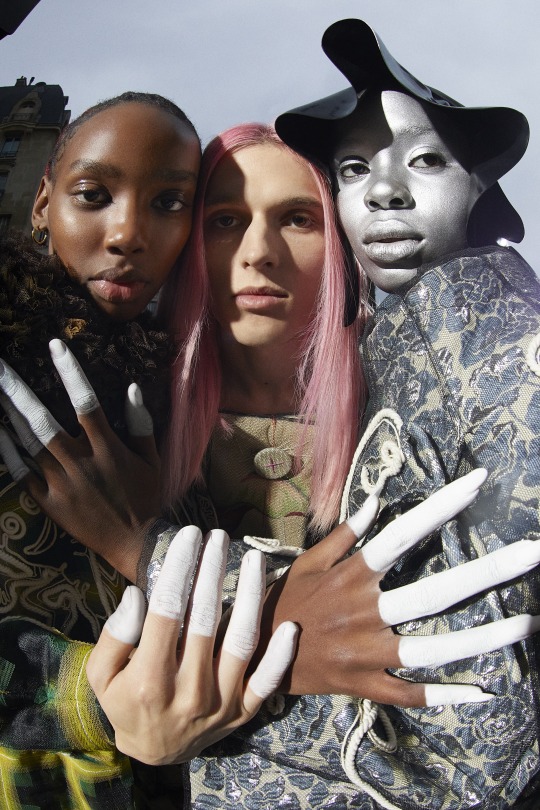
COLLECTIBLE DRY MAG/LIQUID SOLID ISSUE
PHOTO: FABIEN MONTIQUE @fabienmontique-blog-blog
CREATIVE DIRECTION & STYLE: MONICA PILLOSIO
SARAH ISH @selectmodelmgmt
MODELS: THIMOTHE DOMENICO @mmanagementmodels
FAY YABRE @selectmodelsmgmt
MAKE UP: MARIA OLSSON @mariaollson
HAIR: RIMI @rimi_uraka
#monica pillosio#fabien montique#couture#maison margiela#collectible dry#paris fashion week#maria olsson
0 notes
Text
What Lurks in the Shadows
Teridax, once Makuta of Metru Nui, one of the inner ringleaders of the ancient Makuta-Matoran War, and the single chief architect of the cataclysm that had engulfed the Matoran Empire, had been reduced to living in a cave, and he had been there a long time, since escaping the cataclysm himself, which had raged beyond even his expectations, his own life endangered by the Toa Metru as they strove to rescue a remnant of the Matoran.
Grievously wounded, Teridax was long a mere shadow beneath the island, a reason for the Turaga to strictly forbid the amnesiac Matoran from exploring the tunnels and caves that had formed over the dome of the Metru Nui. His recovery was slow, but it was not time wasted. The cataclysm had invoked magicks previously unknown by any beings within the machine ecosystem and Teridax has studied, gaining power and knowledge beyond any of his buried kin, and as he recovered, he began to again seek servants.
Mostly, these were Rahi, who now dwelt on the newly-raised island as they had once dwelt within the ecosystem below, but they were limited. A single Rahkshi he made, a great expenditure of his own being at a time of weakness, but a necessary tool if he wished to know what had survived of the Matoran Empire, and he sent it off, into the deepest tunnels below the island, seeking for a way back. A Rahkshi of Teleportation, it was equipped better than most to find a way, but for many years it did not return.
Above, the Matoran of Mata Nui built villages and lives only troubled by the occasional Rahi stirred forth by Teridax’s will, a warning to keep out and keep away, but never a true threat beyond what the Turaga could handle, for as yet, Teridax could manage no more than that.
Then, unlooked for by either the Turaga or Teridax, Toa returned out of the skies and landed on the shores of Mata Nui. Prototypes hidden away in the stars long before the Makuta-Matoran War, these Toa knew nothing of the Matoran Empire’s long history or of its fall, but they were great heroes, made by Artakha at the height of his skill, and the Turaga deemed them worthy (indeed, deemed them the only ones able) to don the Golden Masks, the right of kings long locked away, but rescued from the archives of Metru Nui during the cataclysm.
The Golden Masks were not known to have survived by Teridax when the Toa first confronted him, and he appeared before them as a whirling spirit of darkness. He had discerned the Toa’s ignorance of the fallen kingdom and their own making in their thoughts that day and thought to send them away with a false sense of victory: let the Matoran and the Turaga and these new Toa think they’re the victors, enjoying their life as primitives on the surface. If they threatened to invade his space again, he could always awaken the Bohrok hive that had been wedged into the same space.
And that was when the Rakhski returned, against Teridax’s expectations, and his goals and plans changed as he learned how much of the mechanical ecosystem remained: a veritable chain or web of inhabitable domes beneath the seas. It was not the shining civilized empire of yore, nor the sleepy, provincial islands the cataclysm had destroyed, but the infrastructure was still there, still recoverable, even still inhabited.
Teridax had learned from the cataclysm, but those lessons did not change his goals. The empire would be his, and he immediately had concern that the Golden Masks had been found and were being worn. Teridax regretted that he had shown his hand to the Toa. Not that they truly understood who, or what, they had faced, but he begrudged them any knowledge, lest it should give them any advantage or hope. The Golden Masks were ancient and powerful, and they were a symbol Teridax could not allow to be shown within the domes.
Close to his original strength, Teridax considered immediately making more Rahkshi. The Bohrok were wreaking havoc on the island; it wouldn’t take many to wipe out the Matoran and their heroes, if they struck fast, but then the unthinkable happened: the Toa made peace with the Bohrok and something happened to the Toa. When they emerged, three days late, from the cavern beneath the Bahrag, the Toa had changed. They were armoured and their powers had grown, so they said, but Teridax noted only one thing: the Golden Masks were gone.
Again, he sent his Rahkshi into the earth, with new and specific instructions, but to Mata Nui he began to again send poisoned Rahi, a test and a reminder to the Turaga. The Toa Nuva would need to be destroyed, as a dangerous force beyond his control, but his concern was an order of magnitude less than when they had borne the Golden Masks. Again, he waited.
#Bionicle#alt-canon#Makuta#Teridax#Rahkshi#Golden Kanohi#Those posts this morning on the YABR Makuta problem broke the logjam of what I was going to write next so here we are#Dialogue-light and a bit recappy but this did nudge the plot into some greater clarity for me
12 notes
·
View notes
Text
Kwesi Korang – Yabre Anka Yada Ft. Amerado, King Paluta & Chiki Africa
Kwesi Korang – Yabre Anka Yada Ft. Amerado, King Paluta & Chiki Africa
Kwesi Korang – Yabre Anka Yada Ft. Amerado, King Paluta & Chiki Africa mp3 Download.
Ghanaian musician Kwesi Korang recruits Ameardo, King Paluta & Chiki Africa on this hit potential track called ‘Yabre Anka Yada’. The jam is released under his current music label WTM.
It was produced by Khendi Beat. Stream and share it below.
Kwesi korang – Yabre Anka Yada Kwesi korang ft. amerado, king paluta,…

View On WordPress
0 notes
Text
Kwesi Korang Teams Up With Chiki Africa, King Paluta And Amerado On New Song ‘Yabre Anka Yada’ – Stream
Kwesi Korang Teams Up With Chiki Africa, King Paluta And Amerado On New Song ‘Yabre Anka Yada’ – Stream
Budding Ghanaian rapper, Kwesi Korang has teamed up with Chiki Africa, King Paluta and Amerado on a new song titled ‘Yabre Anka Yada’.
After hustling for a long time, these great talents were optimistic that this is their season.
They also prayed to God to grant them their wishes.
No matter the challenge, Kwesi Korang, Chiki Africa, King Paluta and Amerado said they won’t give up.
‘Yabre Anka…
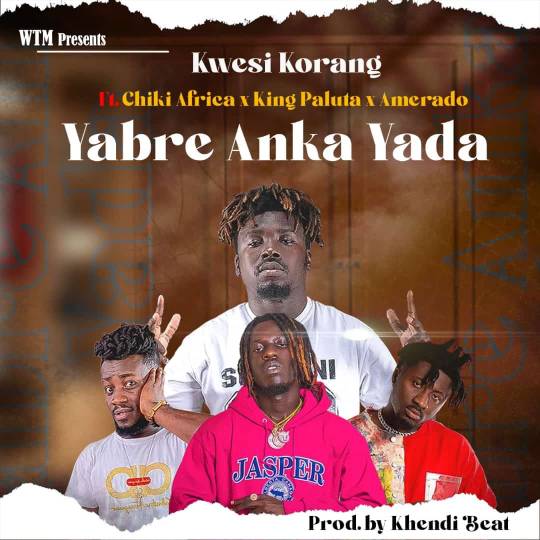
View On WordPress
#Amerado#King Paluta#Kwesi Korang#Kwesi Korang Feat. Chiki Africa x King Paluta And Amerado – Yabre Anka Yada#Music
0 notes
Text
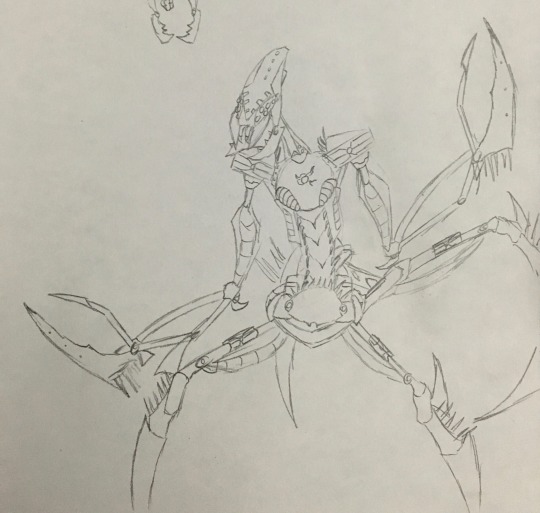
Here’s a Nidhiki sketch from a couple months ago that I never finished.
35 notes
·
View notes
Text
Dufie - Darling (Prod. By Qweccy Pluzz)
Dufie – Darling (Prod. By Qweccy Pluzz)
Dufie – Darling (Prod. By Qweccy Pluzz)
From rocking live shows to illuminating our screens with her elegant appearance, the singing goddess, Dufie shares with us her latest composition titled “Darling”. After proving her versatility on multiple genres, with the most recent wavy drill “Yabre”, Dufie makes a calm transition to deliver her breathtaking vocals, yet again on beautiful highlife…

View On WordPress
#Dufie#Dufie - Apology (Prod By Dewuro Beat)#Dufie - Darling#Dufie - Darling (Prod. By Qweccy Pluzz)#Dufie - Yabre
0 notes
Text
Kay White ft Biff Doe - Yabre a Anka Yada ( Prod By. Quab Sea)
Kay White ft Biff Doe – Yabre a Anka Yada ( Prod By. Quab Sea)
Kay White ft Biff Doe – Yabre a Anka Yada ( Prod By. Quab Sea )
https://ghonpoint.com/wp-content/uploads/2020/12/Kay-White-ft-Biff-Doe-Yabre-a-Anka-Yada-Prod-By.-Quab-Sea-.mp3

View On WordPress
#Biff Doe#Ghana music#Ghonpoint#ghonpoint.com#Kay White#Kay White ft Biff Doe#Kay White ft Biff Doe - Yabre a Anka Yada#latest Ghana music#Quab Sea#Yabre a Anka Yada
0 notes
Text
Kofi Mole - Yabre (Feat. Fameye)
Kofi Mole – Yabre (Feat. Fameye)
Kofi Mole – Yabre (Feat. Fameye)
VGMA 2020-nominee and NGA frontman Kofi mole has released a new song.
Titled “Yabre” the banger features highlife singer Fameye.
Produced by his NGA in house producer Kobby Jsy known for producing his monster hit single “Don’t be late”, the song according to the Vodafone Ghana Music Award 2020 possible Hip pop song of the year winner is to encourage the youth to…
View On WordPress
0 notes
Text
ISLAM 101: El Profeta Muhammad (PB): La Parte 37
REGISTRANDO LAS TRADICIONES
Las primeras colecciones de tradiciones fueron hechas durante el califato de Omar ibn Abd al-Aziz, al principio del Segundo siglo del Islam (719-722). Sin embargo, ha de ser recordado que todas las tradiciones que iban a ser recopiladas y ordenadas en libros circulaban oralmente. Además, muchas de ellas ya habían sido registradas en colecciones privadas.La gran mayoría de los árabes eran iletrados. Cuando la Revelación comenzó, surgió un deseo de aprender a leer y a escribir el cual era alentado por el Profeta. Hay que recordar que dejaba en libertad a los prisioneros que sabían leer y escribir capturados en Badr sólo después de que cada uno de ellos hubiese enseñado a diez musulmanes a leer y a escribir. Además, la revelación comenzaba con la siguiente orden:
¡Lee en el nombre de tu Señor que ha creado! Ha creado al hombre de un coágulo suspendido (en la pared del útero). ¡Lee, que tu Señor es el más Generoso! El que enseñó (a escribir) por medio del cálamo. Enseñó al hombre lo que no sabía (96:1-5).
A pesar de la importancia otorgada al conocimiento y al aprendizaje, durante los inicios de su Mensaje, el Profeta no permitió a sus Compañeros que escribiesen lo que él decía. Por ejemplo, dijo: “No escribáis lo que digo. Si habéis escrito algo dicho por mí que no sea parte del Corán, destruidlo”. No quería que los Compañeros confundiesen los versículos coránicos con sus propias palabras. El Corán todavía estaba siendo revelado y registrado en hojas o trozos de cuero o madera. Tomaría su forma final de libro en fechas más tardías.
Ésta era una precaución comprensible, ya que quería asegurarse de que las sucesivas generaciones no confundirían sus palabras con las de Allah. Ésta consta claramente en una tradición narrada por Abu Huraira: “El Mensajero se nos acercó mientras algunos amigos escribían lo que le habían escuchado decir. Preguntó qué estaban escribiendo y le respondieron: ‘Lo que te hemos escuchado decir’. El Mensajero les amonestó diciendo: ‘¿Sabéis que las naciones que os precedieron se desviaron por haber escrito lo que no figuraba en el Libro de Allah?’”.
Otra razón para esta prohibición es que la mayoría de las revelaciones coránicas llegaron en ocasiones específicas. Por lo tanto, algunos de sus versículos son concisos y claros, mientras que otros son ambiguos. Los versículos alegóricos aparecen junto a los explícitos e incontrovertibles. Al estar la comunidad islámica todavía en evolución, unos mandamientos reemplazaban a otros.
El Mensajero tenía que dirigirse, en varias ocasiones, a gente de muy variados temperamentos y niveles de entendimiento, a la vez que a “nuevos” y “viejos” musulmanes. Por ejemplo, cuando un nuevo musulmán preguntaba cuál era la mejor acción, respondía que era creer y hacer las cinco oraciones prescritas. Sin embargo, durante la época en la que la yihad tenía prioridad, decía que era la yihad en el camino de Allah. Además, siendo así que el Islam es para todos los tiempos y gentes, el Profeta recurría frecuentemente a alegorías, símiles, parábolas y metáforas.
Esto y otros factores tal vez fueron los que le llevaron a prohibir a ciertas personas que registrasen sus palabras. Si todos hubiesen llevado una cuenta propia sin poder distinguir entre lo real y lo metafórico, lo concreto y lo abstracto, lo abolido y lo aprobado, lo general y lo particular y ocasional, el resultado hubiese sido un caos y una tergiversación. Por esa razón, a veces Omar advertía a la gente que no narrase las tradiciones proféticas sin la debida atención.
Sin embargo, muchas tradiciones afirman que el Mensajero permitió a sus Compañeros que escribiesen sus palabras. Llegó un momento en que los compañeros alcanzaron madurez intelectual y espiritual para distinguir entre el Corán y el hadiz. Por consiguiente, pudieron conceder la atención e importancia adecuada a cada uno de ellos, y entender las circunstancias relativas a cada tradición. Es entonces cuando el Mensajero les animó a que pusiesen por escrito las tradiciones.
Abu Huraira relata lo siguiente: “Abdallah ibn Amr ibn al-As es el único compañero que tiene tantas tradiciones como yo tengo. Yo no las escribí, pero él sí”. Abdallah informó que escribió todo lo que oyó decir al Mensajero. Algunos le dijeron: “Escribes todo lo que sale de la boca del Mensajero. Es un ser humano; y unas veces está enfadado y otras contento”. Abdallah refirió el asunto al Mensajero, el cual señaló a su boca y dijo: “Escribe, pues juro por Aquel en Cuya mano está mi vida que sólo la verdad sale de ésta”.
Enfadado o contento, el Mensajero nunca habló por sí mismo; por capricho o antojo. Todo lo que decía era una Revelación -explícita o implícitamente- revelada (53:3-4). Como todas sus palabras y hechos tenían algo que ver con el Islam, se tenían que registrar. Los Compañeros llevaron a cabo esta sagrada labor ya sea memorizando o dejando constancia escrita de la que oyeron o vieron. Como resultado de ello, su vida es la biografía más completa jamás reproducida. Cada aspecto, incluso los más ínfimos detalles, han sido transmitidos a través de las generaciones. Por eso tenemos que sentirnos endeudados con los Compañeros y las dos o tres generaciones que les sucedieron, y en especial con los grandes Tradicionistas, los cuales registraron y transmitieron sus palabras y acciones.
Una vez, alguien se quejó al Mensajero diciendo: “Mensajero de Allah, escuchamos muchas cosas de ti; pero la mayoría se nos olvida porque no podemos memorizarlas”. El Mensajero respondió: “Pedidle ayuda a vuestra mano derecha”. En otras palabras, escribid lo que escuchéis. Cuando Rafi ibn Jadiy preguntó al Mensajero si podían escribir lo que le escuchaban decir, se le dijo que sí podía. Tal y como consta en los Sunan de al-Darimi, el Mensajero aconsejó lo siguiente: “Dejad constancia del conocimiento por escrito”.[8] Durante la conquista de La Meca, el Mensajero dio un sermón. Un yemení llamado Abu Shah, se puso de pie y dijo: “Mensajero, escribe estas palabras para mí”. El Mensajero ordenó que así fuese hecho”.
Ali tenía una hoja, que adjuntó a su espada, en la que estaban escritas las narraciones concernientes al precio de la sangre por daños, la santificación de Medina y otros asuntos. Ibn Abbas dejó atrás un camello cargado con libros la mayoría de los cuales versaban sobre lo que había oído del Mensajero y de los demás Compañeros. El Mensajero envió una carta a Amr ibn Hazm la cual trataba de precio de la sangre, por asesinato y daños y la Ley del Talión. Esta carta fue transmitida a Abu Bakr ibn Muhammad, su bisnieto.
Igualmente, un pergamino enviado por el Mensajero a Abu Rafi fue transmitido a Abu Bakr ibn Abd al-Rahman ibn Hariz, uno de los Tabi’un.[13] Un destacado estudioso de dicha generación, Muyahid ibn Yabr, vio la colección de Abdallah ibn Amr Al-Sahifat al-Sadiqa. Ibn al-Azir, historiador de renombre, dice que contenía alrededor de mil tradiciones; la mitad de las cuales constan en los libros de tradiciones auténticas, con la cadena de transmisión de Amr ibn Shuayb, de su padre y de su abuelo, respectivamente.
Yabir ibn Abdallah al-Ansari también dejó un voluminoso libro que contenía los dichos que escuchó del Mensajero. Al-Sahifa al-Sahiha es otra importante fuente de Hadiz de los primeros tiempos. Hammam ibn Munabbih, su compilador, seguía a Abu Huraira adonde fuese y escribió los dichos proféticos transmitidos por él. Esta compilación, recientemente publicada por Muhammad Hamidullah, ha sido datada mediante el método del carbono 14 en una antigüedad de trece siglos. Casi todas sus tradiciones pueden ser encontradas en el Musnad de Ahmad ibn Hanbal o en los Sahihayn de Bujari y Muslim.
Tras estas primeras compilaciones sencillas, el Califa Omar ibn Abd al-Aziz, que gobernó en 719-722, decidió que todas las tradiciones orales y escritas auténticas deberían ser reunidas en libros. Ordenó a Abu Bakr ibn Muhammad ibn Amr ibn Hazm, gobernador de Medina, que supervisase esta misión. Muhammad ibn Shihab al-Zuhri, famoso por su profundo conocimiento y aguda inteligencia, llevó a cabo dicha misión adquiriendo el honor de ser el compilador oficial de tradiciones.
Pero dicho honor no estaba restringido sólo a él: Abd al-Malik ibn Abd al-Aziz ibn Yuray (La Meca), Said ibn Abi Aruba (Irak), Awzai (Damasco), Zayd ibn Qudama y Sufyan al-Zawri (Kufa), Hammad ibn Salama (Basora) y Abdallah ibn al-Mubarak (Jorasán) también participaron.
Este período de compilación oficial y sistemática fue seguido por un período de clasificación por tradicionistas tan importantes como Abu Dawud al-Tayalisi, Musaddad ibn Musarhad, al-Humaydi y Ahmad ibn Hanbal, los cuales compusieron sus Musnads. Abd al-Razzaq ibn Hammam y otros redactaron sus Musannafs y Ibn Abi Zib y el Imán Malik produjeron sus Al-Muwattas. Yahya ibn Said al-Qattan y Yahya ibn Said al-Ansari también han de ser mencionados entre las preeminentes personalidades de este período.
Luego vino el período de tradicionistas tan importantes como Bujari, Muslim, Abu Dawud, Nasai, Tirmizi e Ibn Maya, que compusieron los conocidísimos seis libros auténticos de tradiciones. Estas celebridades, y otras personas ilustres como Yahya ibn Main, incluyeron en sus colecciones lo que creyeron eran las tradiciones más auténticas tras juzgarlas según los más estrictos criterios.
Por ejemplo, el Imán Bujari fue a la búsqueda de una tradición transmitida por un hombre famoso por su fiabilidad y piedad. Cuando vio al hombre sujetar su gorro ante su animal como si contuviese algo para comer en un intento de que le siguiese, le preguntó al hombre si el gorro contenía algún alimento para el animal. Cuando le dijo que no, Bujari no tomó ninguna tradición del hombre. Según él, si alguien podía engañar así a un animal, también podría engañar a la gente. Estos eran los exigentes criterios aplicados cuando se juzgaba la fiabilidad de los narradores.
Resumiendo, las tradiciones proféticas fueron escritas y también memorizadas durante el tiempo de los Compañeros. Cuando finalizó el primer siglo islámico, circulaban ampliamente en forma oral y escrita. El Califa Omar ibn Abd al-Aziz comisionó a eminentes eruditos para que produjesen la primera colección oficial en diferentes ciudades. Se distinguieron las tradiciones auténticas de las inventadas con el más riguroso cuidado y el más estricto criterio. Tras ser clasificadas, se llevaron a cabo las colecciones más sistemáticas y exactas por parte de los más prominentes tradicionistas de aquella época.
Más tarde se compusieron nuevos y auténticos libros de tradiciones. Asimismo, ilustres críticos de tradiciones tal y como Ibn Hayar al-Asqalani, Ibn Abd al-Barr, Zahabi, Ibn al-Yawzi y Zayn al-Din al-Iraqi revisaron todas las tradiciones y escribieron largos compendios sobre sus narradores.
Como resultado de dicha actividad académica, la Sunna nos ha llegado por los canales más fidedignos. Nadie puede poner en duda la autenticidad de esta segunda fuente del Islam, que se aproxima al Corán en pureza, autenticidad y fiabilidad.
#allah#dios#muhammad#profeta#sunna#hadiz#aleya#Corán#hijab#ayuda#recordatorio#Religion#islam#musulman#musulmana#Oración#adoración#conversa#converso#convertido al islam#convertida al islam#como convertirse al islam#bienvenido al islam#nuevo musulman#nueva musulmana#islam ayuda#conocer islam#aprender islam#islam en espanol#islam in spanish
2 notes
·
View notes

